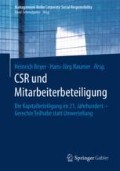Abstract
This paper seeks to convince you that the best response to the coming dominance of AI robots in the world of work is to expand both employee ownership of firms and citizen ownership of business capital more broadly. Section 1 analyzes the likely effects of advances in AI robot technologies on the comparative advantage of machines versus humans in high-value-added work and the consequences for wages and salaries and income inequality. Section 2 argues that the best way to assure that living standards increase for all in the age of AI robots is through enhanced employee ownership and greater citizens’ stake in business capital, distributing capital income far more widely than today.
Access this chapter
Tax calculation will be finalised at checkout
Purchases are for personal use only
Notes
- 1.
Guardian, Jan 11, 2017; Wired, Nov 28, 2017 Morningstar Dec 4, 2017; New York Times, Dec 11, 2017.
- 2.
International Federation of Robotics data shows 328,000 robots introduced in 2016 compared to 112,000 in 2006.
- 3.
- 4.
The article quotes one human expert declaring, “This algorithm could run cities, continents, universes.”
- 5.
If Elon Musk’s Neuralink company succeeds in developing brain implants that link our brains to computers, the choice will include some cyborg mixture as well (Wikipedia 2018b).
- 6.
In a production function F where labor (L) and robots (R) produce output, the elasticity of substitution is dln(L / R) / dln FL / FR, where ln is the natural log and Fi is the marginal product. Profit‐maximizer will hire workers so that FL / FR, = W / CR, where W is wage unit of time and CR is the cost of the robot per unit of time.
- 7.
These practices range from 100 % employee ownership via a trust fund, exemplified by the UK’s John Lewis; modest employee shares of equity paid by firm profits as per most US Employee Stock Ownership Plans; ownership in start‐ups, funded by workers receiving below market pay; partnerships; employee stock purchase plans; broad‐based stock options; and profit‐sharing and gain‐sharing, which give ownership of part of earnings or cost‐reductions but not of capital per se.
- 8.
- 9.
US ESOPs often have retirement plans that invest outside the firm in addition to their ESOP trust; many firms with a long‐term ownership plan also offer workers cash profit‐sharing in the short run. Employees with stock options or stock grants often cash them out quickly after they have met the usual required holding period. On the order of half of workers offered employee stock purchase plans forego the opportunity to buy shares in their firm.
References
Blasi JR, Richard BF, Kruse DL (2016) Do broad-based employee ownership, profit sharing and stock options help the best firms do even better? Br J Ind Relations 1:55–82
Dockrill P (2017) In Just 4 hours, Google’s AI mastered all the chess knowledge in history. Science Alert. https://www.sciencealert.com/it-took-4-hours-google-s-ai-world-s-best-chess-player-deepmind-alphazero. Accessed 4 June 2018
Freeman RB (2017) Work and income in the age of AI robots. Hong Kong University of Science & Technology/Ernst-Young Seminar, 16.05.
Grace K, Salvatier J, Dafoe A, Zhang B, Evans O (2017) When will AI exceed human performance? Evidence from AI experts, available at: arXiv:1705.08807 [cs.AI]
Kruse DL, Richard BF, Blasi JR (2010) Shared capitalism at work. University of Chicago Press for NBER, Chicago
Kurtulus FA, Kruse DL (2017) How did employee ownership firms weather the last two recessions?: Employee ownership, employment stability, and firm survival in the United States: 1999–2011. W.E. Upjohn Institute for Employment Research, Kalamazoo https://doi.org/10.17848/9780880995276
Mishel L, Bivens J (2017) The zombie robot argument lurches on: There is no evidence that automation leads to joblessness or inequality. Economic Policy Institute May 24 (Washington, DC). https://www.epi.org/publication/the-zombie-robot-argument-lurches-on-there-is-no-evidence-that-automation-leads-to-joblessness-or-inequality/. Accessed 4 June 2018
Moravčík M, Schmid M, Burch N, Lisý V, Morrill D, Bard N, Davis T, Waugh K, Johanson M, Bowling M (2017) DeepStack: Expert-level artificial intelligence in heads-up no-limit poker. Science 356(6337):508–513 (available at: http://science.sciencemag.org/content/356/6337/508.full (accessed 4 June 2018))
O’Boyle EH, Patel PC, Gonzalez-Mulé E (2016) Employee ownership and firm performance: A meta-analysis. Hum Resour Manag J 26(4):425–448
Oxera (2007) Tax-advantaged employee share schemes: Analysis of productivity effects. HM revenue and customs, research report no. 33. http://webarchive.nationalarchives.gov.uk/20080804003221/http://www.hmrc.gov.uk//research/index.htm. Accessed 4 June 2018
Rosenthal SM, Austin LS (2016) The dwindling taxable share of U.S. corporate stock. Tax notes, May 16. Tax Policy Center, Urban Institute & Brookings Institution, 16 May. http://www.taxpolicycenter.org/publications/dwindling-taxable-share-us-corporate-stock/full. Accessed 4 June 2018
Solon O (2017) Oh the humanity! Poker computer trounces humans in big step for AI. The Guardian, January 30. https://www.theguardian.com/technology/2017/jan/30/libratus-poker-artificial-intelligence-professional-human-players-competition. Accessed 4 June 2018
Wikipedia (2018a) AlphaGo. Wikipedia, the free encyclopedia. https://en.wikipedia.org/w/index.php?title=AlphaGo&oldid=842270143. Accessed 4 June 2018
Wikipedia (2018b) Neuralink. Wikipedia, the free encyclopedia. https://en.wikipedia.org/w/index.php?title=Neuralink&oldid=837056992. Accessed 4 June 2018
Yu A (2016) Behold a robot hand with a soft touch. NPR all tech considered, December 11. https://www.npr.org/sections/alltechconsidered/2016/12/11/504953475/behold-a-robot-hand-with-a-soft-touch. Accessed 4 June 2018
Author information
Authors and Affiliations
Corresponding author
Editor information
Editors and Affiliations
Rights and permissions
Copyright information
© 2018 Springer-Verlag GmbH Deutschland, ein Teil von Springer Nature
About this chapter
Cite this chapter
Freeman, R.B. (2018). Employee and Citizen Ownership of Business Capital in the Age of AI Robots. In: Beyer, H., Naumer, HJ. (eds) CSR und Mitarbeiterbeteiligung. Management-Reihe Corporate Social Responsibility. Springer Gabler, Berlin, Heidelberg. https://doi.org/10.1007/978-3-662-57600-7_10
Download citation
DOI: https://doi.org/10.1007/978-3-662-57600-7_10
Published:
Publisher Name: Springer Gabler, Berlin, Heidelberg
Print ISBN: 978-3-662-57599-4
Online ISBN: 978-3-662-57600-7
eBook Packages: Business and Economics (German Language)

